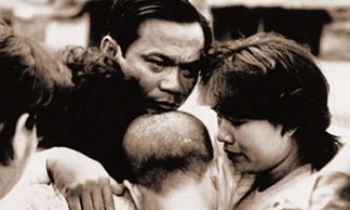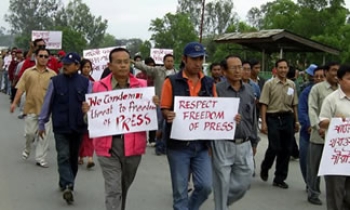America is wired. Sixty-three percent of U.S. adults use the Internet daily, 78 percent of 18-to-29-year-olds are online, and approximately 60 million people now have broadband service in their homes.
"In the future, wireless connectivity will increase through laptops, cell phones and personal digital devices such as PalmPilots and BlackBerries," says a 2005 report by Lee Raine, project director at the Pew Internet & American Life Project in Washington. "Phones themselves will increasingly become powerful computing and gaming devices. More things will become connected to the Internet, from cars to home appliances to jewelry."
Addressing about 120 newspaper industry leaders in early June, Raine then attempted to prove his point.
"Is anyone here blogging this speech?" he asked. "Whenever I give these kinds of talks, someone usually is."
Absolute silence.
And with that, NAA’s Future of Newspapers Conference got under way.
Newspaper executives gathered in Chicago June 7-8 to plan for their companies’ futures, although present market conditions were a far greater concern. It was no coincidence that the gathering came on the heels of NAA’s Readership Conference, a day-and-a-half of championing the industry’s now-preferred metric for measuring audience reach. But according to many of the featured speakers at the FON event, newspaper companies’ future success will require far more than better accounting of product usage.
Among the suggested imperatives: Simplify rate cards to make it easier for businesses to advertise; invest in technology that can deliver information to consumers in new ways; give consumers the power to decide what information is of value to them; expand market share in addition to protecting existing turf; and innovate, innovate, innovate.
The newspaper business model of the future will change, said Barbara Cohen, president of Kannon Consulting in Chicago. Exactly how and when remains to be seen, but "resistance is futile," she said.
The challenge, according to some in attendance, is convincing their bosses of that point. "I don’t know that the people who have gotten us to this point are going to lead us out of it," said Edward Canale, vice president of new media and strategic planning at The Sacramento Bee.
Perhaps the best recipe for innovation came, in part, from Scott Angus, editor of The Janesville (Wis.) Gazette, who presented his paper’s new look at the Readership Conference. A company, he said, must make cross-departmental collaboration an integral part of its everyday operation, thereby mitigating those who are most resistant to change.
Rethinking how newspapers operate may not be easy, said David Hiller, publisher and chief executive officer of the Chicago Tribune, but it’s essential to the industry’s survival. "If we don’t shake off the cobwebs and do things differently to engage advertisers," he said, "we’re going to be in trouble."
Andrew Swinand, senior vice president of the media research and buying firm Starcom USA in Chicago, suggested that publishers move away from circulation and readership and identify a metric that truly measures consumer usage. "Accountability is pervasive in every other media," he said.
What advertisers want, he added, is an "engaged" audience–people who receive the right message, at the right time, and at the right place so that they can act on it. How engagement, or an advertiser’s return on objective, can best be measured remains a mystery. But with advertisers enjoying increasingly more media options to reach consumers, Swinand said, newspaper companies soon will have no choice but to simplify their ad rates.
It was a point first touted by Dave Morgan, chief executive officer of TACODA Systems Inc., a behavioral targeting agency in New York City. "Advertisers want better, simpler, cheaper," he said. "They want result-based pricing.
"Make rate cards transparent so that all advertisers are on equal footing," Morgan added. "Google did. Google took the risk out of the rate card."
The future is perhaps brightest, or at least less complicated, on the content side of the business. Although a common complaint rendered in most reader surveys is that people no longer have time to read, it’s a point few in attendance gave much credence to.
"We know there’s a ton of time for media in a person’s day," said Hiller. "If you really do something distinctive, they’ll find the time."
Added Reid Ashe, president and chief operating officer of Media General Inc. in Richmond, Va., "There’s nothing wrong with ink on paper if we can get the content right."









